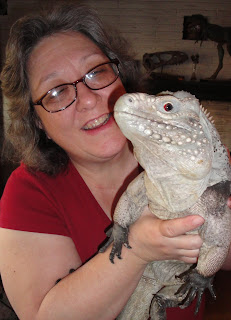
Dresses! Evening gowns! Shoes! Accessories! What does fashion have to do with YA nonfiction? Read on, my lovelies. For, like Stephen Colbert’s segment, The Word, it all comes together in the end. Hint: think the shape of things.
Toward the end of summer I was deep into a new book project. My interviews were transcribed and the chapters pretty close to a final draft. Follow-up questions were written in red. The photographs were cued to match the text. I could see what was missing and knew how to get it. That’s what I would call a fine month’s work.
This all came together in a lovely rented home in Columbia County, New York, where I had nothing more to do but write, eat delicious food, write, drink chilled wine, write, and watch magnificent sunsets. No TV. Infrequent Internet. We were miles away from newspapers, bills, and arguments over the debt ceiling. Writing does have its perks.
But, and there’s always an anxious “but” with writers. My “but” was I couldn’t find a shape to my book. It was a burlap bag of information. Where’s the beginning, how does it end, and when does that ubiquitous arc we know and love show its beautiful arabesque? My editor, agent, and writer-friends told me not to worry, “It will come, just keep working.” I agreed that it would happen, but when? I wanted to see it now. No, not now, yesterday. And so I returned home to the city, home to all-of-the-above mentioned annoyances that keep creativity from a fevered pitch.
Meanwhile, at the Metropolitan Museum of Art, the Alexander McQueen show, Savage Beauty, was winding down. It had been on view for months, and to tell the truth, I had little interest in visiting a crowded fashion show. As the lines at the museum grew longer and longer, the hype louder and louder, I panicked. Am I missing one of the biggest shows in the history of the Met? Then again, do I really want to schlep all the way uptown and stand in line for hours to see clothes? I can do that just as well at Bergdorf’s. Friends whose taste I respect insisted, “It’s not fashion, it’s art!”
“Yeah, yeah.”
“Really.” Finally, societal pressure got the better of me, and two days before the show closed I gave up my BEST writing hours to see fashion – I mean art.
By 9:30 the lines stretched from the second floor, around the halls, down the staircase, out the door, down the grand steps, around the block and into Central Park. But members could go right in. Although I’m a curmudgeon when it comes to viewing art en masse, I took advantage of my membership and went in. Savage Beauty was fascinating – stunning. I learned that Alexander McQueen began a new collection with a concept, and that he laid his work out on a storyboard. Hmmm. Writers do that. The concepts were based on nature, history, cultures, poetry, Darwin, primitivism, and “the dark side of life.” Writers work with these ideas, too. Instead of expressing these themes in writing or painting, he used ostensibly incompatible materials and the female shape. There was a McQueen quote that particularly resonated with me: “People find my things sometimes aggressive. But I don’t see it as aggressive. I see it as romantic, dealing with a dark side of personality.”
If you missed the show, as I almost did, here’s a link: http://blog.metmuseum.org/alexandermcqueen/about/
All in all this was a most pleasant morning. Now the time had come to return home and face my own kind of shape, one that did not include feathers, aluminum, velvets, and tulle. Deep into the bowels of the subway, onto the C train, I sat staring into nothingness the way New Yorkers do when riding in a crowded, drab tunnel.
All of a sudden, and for no reason, I stood up and said, “I’ve got it! I know the shape of my book.” [No one even looked up, which is a good thing about New York subway riders.] Everything came together: the opening paragraph, the ending, chapter order, and even that pesky little arc. It was all there, oozing from my brain, filling my eyes with images, tingling my soon-to-be typing fingertips. How did this happen?
Visiting Alexander McQueen’s exquisite dark side somehow sparked my own creative juices in a fresh way. Intangible, enchanted flashes of recognition, often by way of osmosis, somehow inspire other artists, writers, and poets. How? Perhaps my science-writing colleagues have a theory? That’s why Alvin Ailey would arrive at rehearsals with piles of art books instructing his dancers to find a shape that best portrays the reasons behind their steps in a ballet. That’s why Uta Hagen would send budding actors to the zoo to watch an animal that best reflects their roles in a play. Art seems to be one big blob, connected, disconnected, transformed into individual ideas. [Note to the Department of Education: this is one reason why you cannot eliminate music, art, and creative writing classes. The loss is greater than the cost.]
I arrived at my stop, raced up the stairs, my head still bursting with new ideas. A quick stop at the corner stand for strawberries and bananas – head in clouds – uneven sidewalk – trip – fall – crack a rib. Writing can be painful but that’s the subject for another blog. My body was in bad shape – but not my book. And that’s the shape of things.
Happy New Year, 5772,
Susan





















